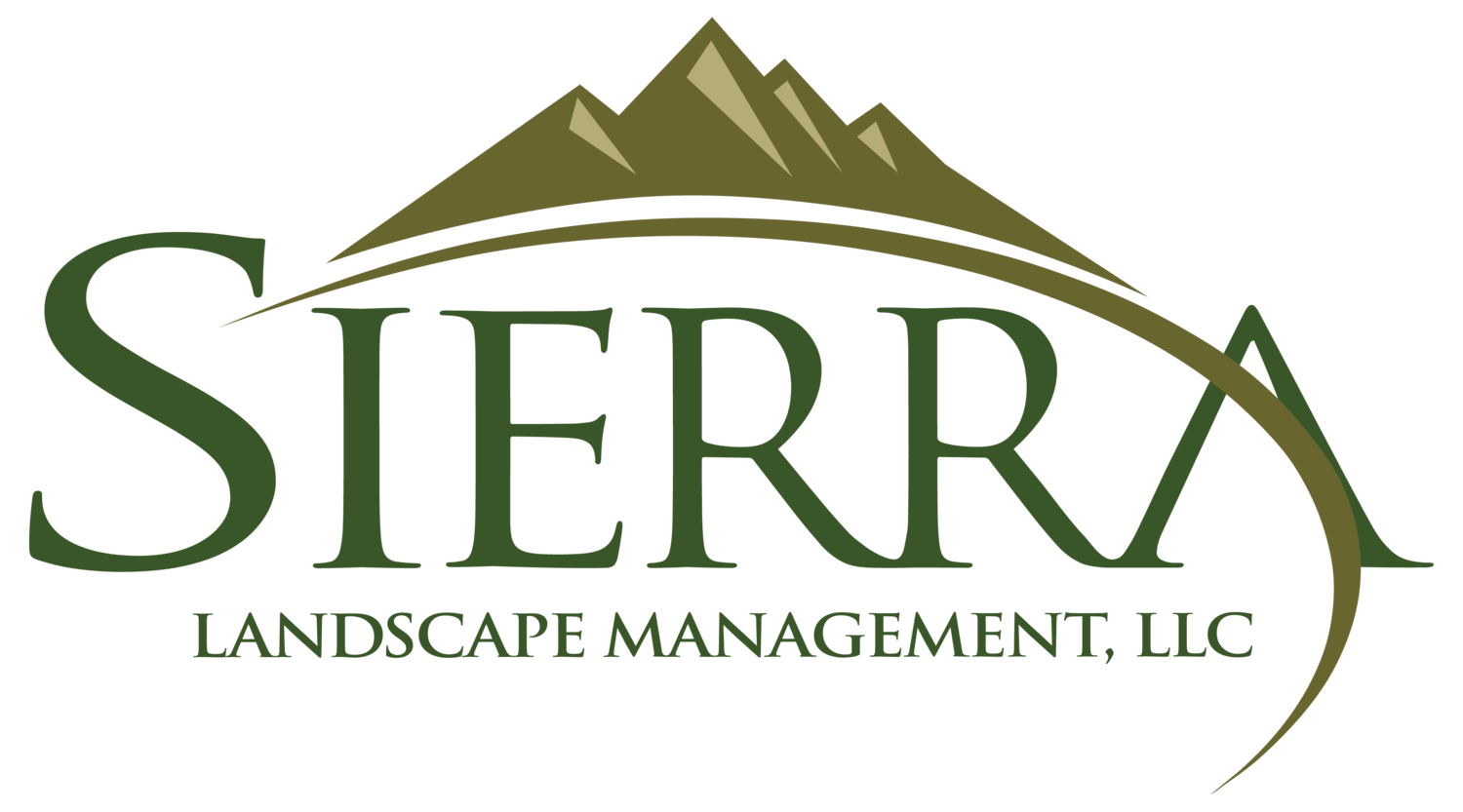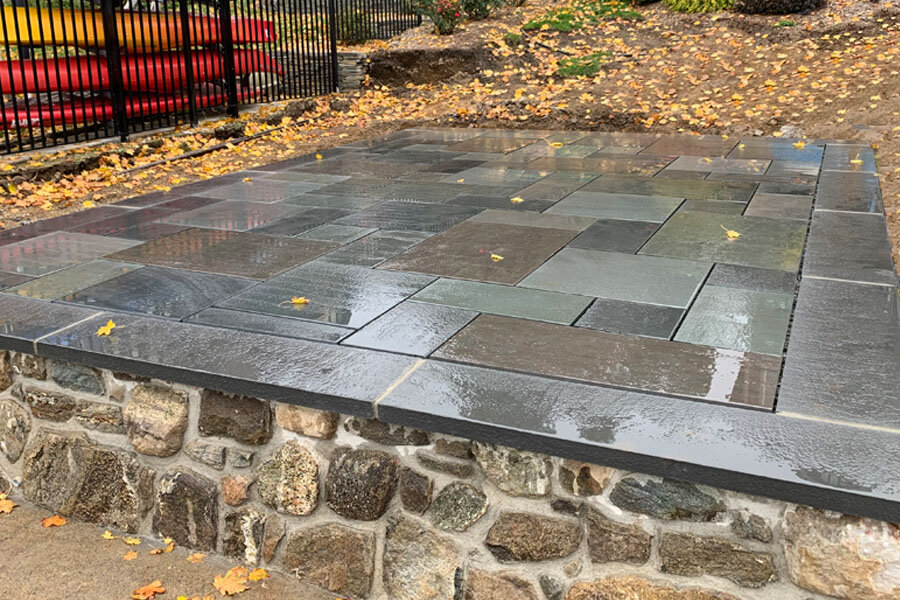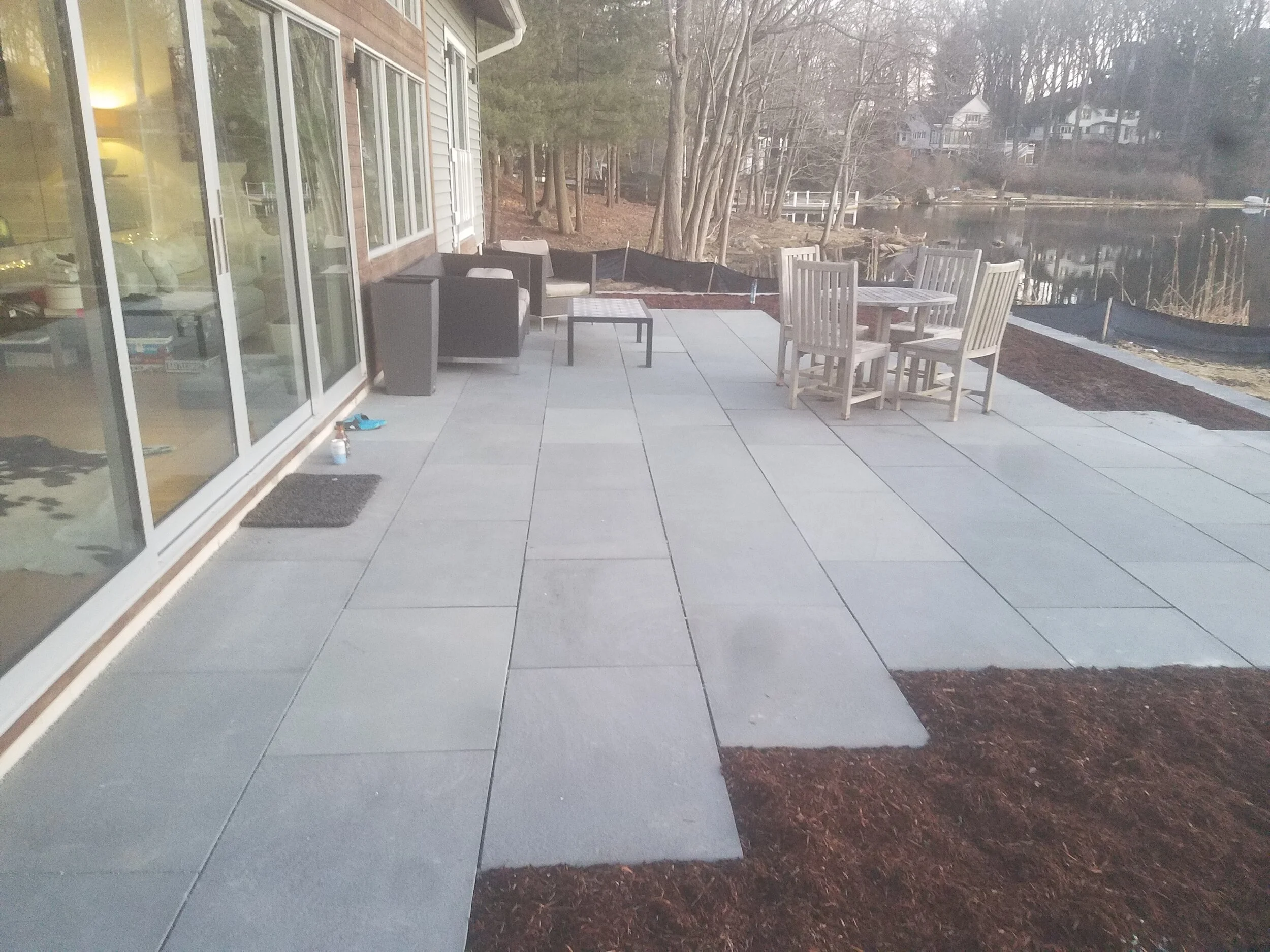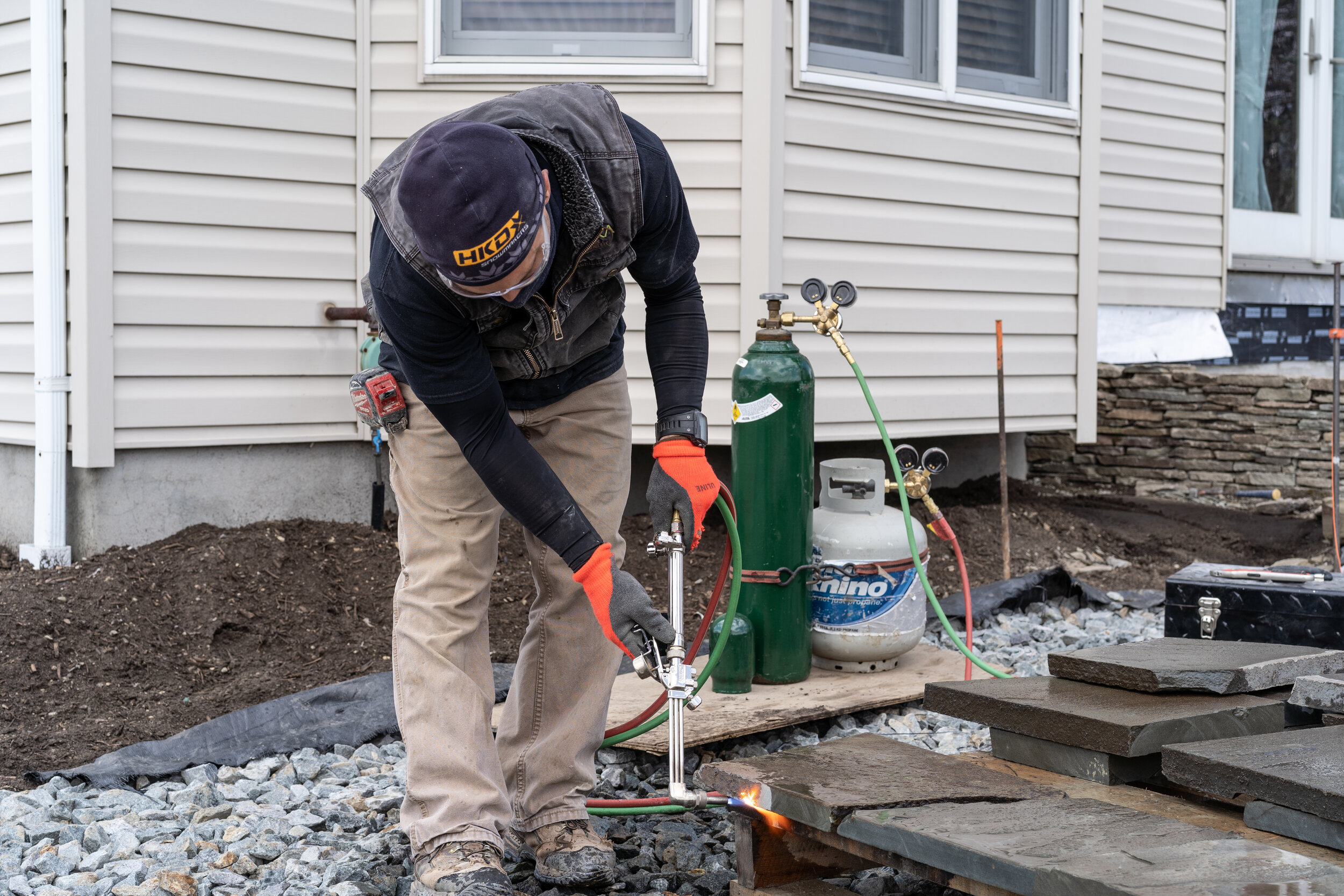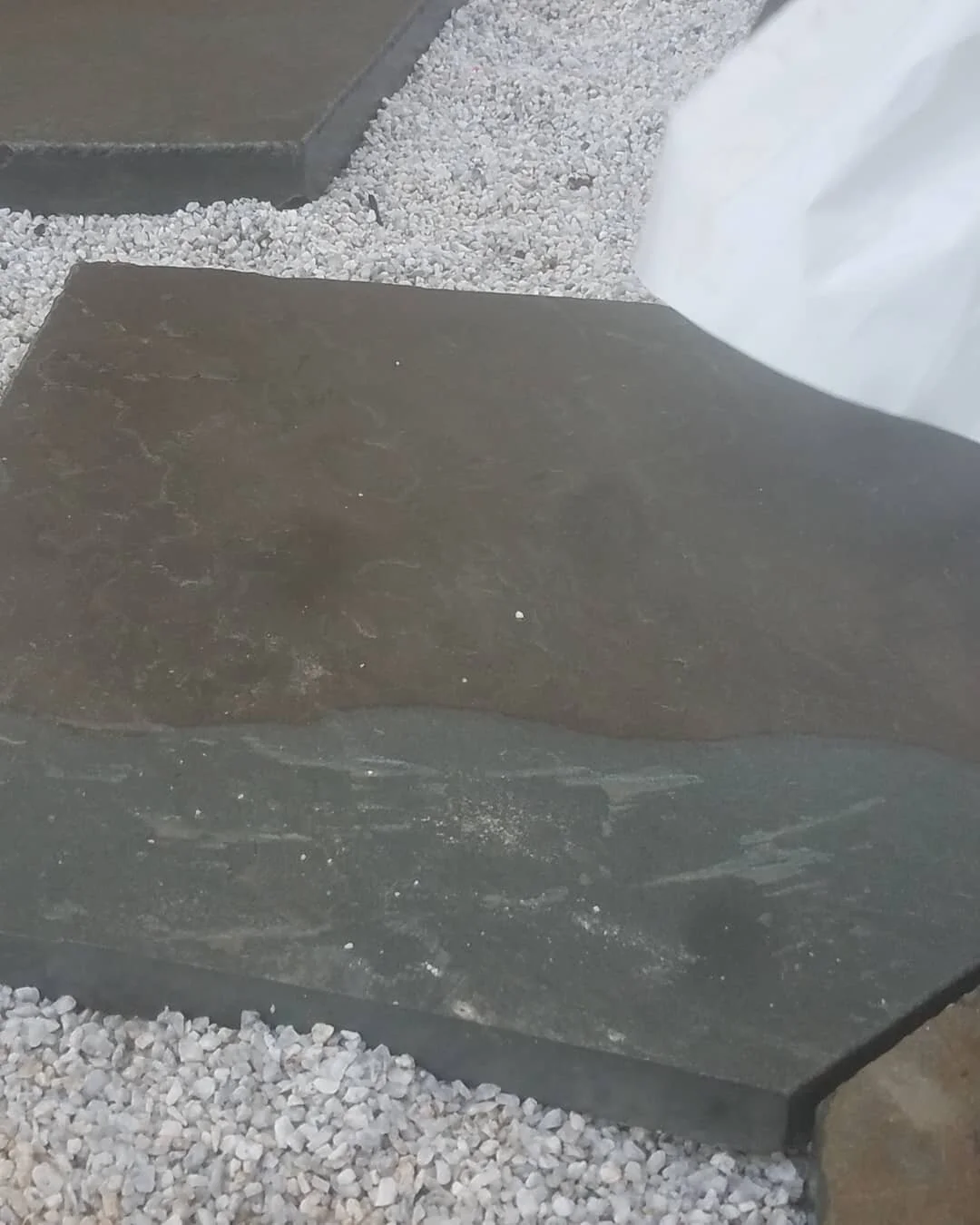How Much Does Bluestone Cost?
A Comprehensive Buyers Guide
You have been dreaming about your new patio or walkway for a while now. You may have even worked with a landscape designer to pick out the materials. Chances are you visited a stone center nearby and picked up a stack of catalogs. At the end of the day though none of the pavers you looked at seemed quite right. They just didn't fit the home and the aesthetic you were hoping for. At last on your way out of the 3rd place you visited a little display caught your eye. Enter the world of natural stone. If you are in the New Jersey or Greater NYC area odds are that display was a form of Bluestone.
Bluestone is nothing new. In fact you will find it in most historic buildings in the area. Patios, walkways, foundations, curbs, and more. It is local, it is readily available and prior to takeover of the hardscape industry by corporate concrete manufactures it was one of only a few choices. The thing is though that working with natural stone can be tricky. A stone mason has to learn the material, the intricacies of individual stones, how to work it and use it. More so the knowledge of how to work with materials that are not always perfect, not always the same thickness, imperfect, just the way nature intended.
The domination of the hardscaping industry by corporate concrete makes total sense. They address all the problems of Bluestone and natural products and offer it up in a convenient package. By nature manufactured materials are more consistent, thus can be installed easier, faster, and by far less skilled hands. Though still today it is not quite right for everyone. The only real problem is that at the time this article was written (pandemic 2021), getting your hands on most concrete pavers is almost impossible. The market is in such high demand that buyers are waiting months for orders to be fulfilled, realizing that there are often hundreds of orders already in front of them.
There is a chance that this is also part of the reason that you stumbled upon Bluestone. That is OK too. Whether you have always known Bluestone was right for you or you are new to considering it, you might have some questions about what it is and how much it might cost, this article is for you.
What is Bluestone?
Bluestone Countertop w/ Natural Stone Island
Bluestone is a sedimentary rock formed by rivers. These rivers carried sand, gravel, and clay down the mountains depositing these, at least in our area, in the Catskill Delta Formation. Over time, layers of deposits where covered up and the pressure worked to create what we see today as Bluestone, along with the supporting rocks found nearby such as shale, limestone, and red rock. All this took place around 400 million years ago.
If you really want to dig in and learn more there is a great article here.
What can Bluestone be used for?
It might be easier to list what Bluestone can not be used for... Foundations, stairs, pool coping, retaining walls, patios, walkways, fireplaces, fire pits, water features, are all great ways to use Bluestone. Bluestone is a highly workable product. This is a huge advantage. It can be manipulated into numerous textures and almost any shape. It possesses compressive strength far surpassing that of any concrete product thus making it a tremendously great option for almost any structural and building need. The biggest challenge is finding a stone-smith who understands the material, its limitations and how to properly utilize it.
Seems there are different types. What's the difference?
Pattern, gauged, natural cleft, thermal, polished, full color, true blue, flagstone, sawn, snapped edge...should I keep going? You might be saying this seems like a lot and confusing. The answer is that all of these are or at least can be Bluestone. These industry terms you might find being thrown around all refer to how the stone is manipulated before it gets to the buyer. Let's take a brief look at what all these mean in order to help you make the buying decision that is right for you.
2’x3’ Pieces of Gauged Pattern create a contemporary feel on the lake
Pattern - Pattern Bluestone comprises of Bluestone slabs of different sizes and shapes. Probably, the most common picture people paint for themselves of Bluestone is the pattern style. Layouts of pattern commonly include a mix of squares, and rectangles of mixed sizes. Typical offerings include 1.5" and 1" thick slabs and thicker are available and commonly used to create counter tops and stairs. Pattern also is common to be seen in styles such as natural cleft, thermal, full color, and true blue. Pattern can also be referred to as flagstone and technically be correct.
Gauged - Gauged Bluestone is most commonly seen as thermal pattern Bluestone. The term gauged refers to the consistent dimensions of the stone commonly created by laser guided saws and precision milling equipment. A good mill can get stones to within 1/16" or better tolerances from stone to stone. Generally speaking less expensive stone is not gauged to tolerances this close, making installation more tricky and time consuming.
Natural Cleft add a layer of interest
Natural Cleft - Natural Cleft Bluestone is stone that has been split instead of sawn. The term refers to the surface texture of the stone. Weak layers in the stone allow the stone to be separated into slabs leaving a textured and undulating surface. For some buyers this is highly desirable as it gives the stone character and added traction. This may not be the best choice for dining areas where inflexible chairs are used requiring a sturdy footing. The small undulations can cause furniture to wiggle around.
Bluestone Stair Caps being Thermalled on-site
Thermal - Thermal Bluestone is stone that has been "thermalled" typically after sawing. Thermalling is the process of rapidly heating the stone with a high temperature torch. This causes the surface of the stone to "pop" which leaves a dimpled surface similar to a golf ball. Thermalling adds texture to the stone and it also erases the saw marks from fabrication. We also use thermalling to round edges of sharp rocks.
Polished - Bluestone is a very dense rock. This allows it to finished and manipulated in many ways. One way it can be finished is to be polished. This is common in countertop and pool coping situations where a super smooth surface is desired. The smooth surface is obtained by working the stone with diamond impregnated sanding discs taking the stone from rough to as smooth as glass.
Sandblasted - Sandblasting stone is nothing new, though starting to catch on in certain applications. Sandblasting leaves a surface that is slightly undulated though different from natural cleft. Sandblasting although very interesting does add a step which carries additional cost and skill requirements. The most common use we see is with countertops, hearths, and stairs.
Full Color Bluestone
Full Color - Full Color Bluestone is stone that has been collected from different deposits. This causes the colors to vary from light blue to dark brown or even rust colored. Sometimes single stones possess a color shift within the individual piece. Because the stone does not need to be premium selected it typically carries a slightly lower cost than mono color variants such as true blue.
Massive Steps cut from True Blue stock
True Blue - True Blue or any of the similarly named variants is simply premium select
Bluestone that has been selected for its consistent color. Typically acceptable variations of True Blue include different shades of blue but do not shift within single stones and do not include any brown or blemishes such as fossils or iron deposits. True Blue and mono color stones often come with a premium price point. Frequently cap stone, stairs, and large slabs are cut from the same material due to their consistent makeup.
Flagstone - Flagstone is a very commonly thrown around industry term that refers to a very broad range of products. When we commonly refer to Flagstone we are really referring to "irregular" flagstone which is slabs of stone that has not been cut or milled giving each stone a unique shape and appearance. Technically all of the above could be also called flagstone since the term simply refers to slabs of flat stone. For our purposes Flagstone really is irregular, natural cleft, full color Bluestone. See why we just call it "Flagstone"?
Sawn - Sawn Bluestone is stone that has been just that sawn usually to a specific dimension. Very often the "sawn" stone is then thermalled for texture.
Combination of Rock Faced and Sawn blocks make this stately retaining wall design.
Snapped Edge - Snapped edge stone is that which has been broken to expose a very rough and irregular texture. This is most common for retaining walls where a rough surface is desired, yet an exact dimension of the stone is not essential. The "snapping" often occurs via a hydraulic press or guillotine. A similar texture can also be acquired with a chisel and skilled hammer. This technique is often referred to as rock facing.
Rock Facing - The process of chiseling and hammering the stone to create a controlled yet rough surface. Several styles of Rock Facing exist and proper Rock Facing requires special tools and knowledge of the material.
What is the downside of using Bluestone?
Bluestone like all materials has it's pros and cons. Bluestone is very dense and workable making it a stone artists dream. It certainly though has some intricacies which can catch apprentice stone crafters by surprise. Learning to work Bluestone is a life long journey and given the cost, not for the faint of heart. Bluestone makes a great building material proven over the centuries to be a durable and stable material in all climates.
Why wouldn't you want to use Bluestone for your project? Let's have a look...
- Bluestone gets hot. Typically the darker the material and denser the material the hotter it gets in the summer sun. We have seen surface temperatures in excess of 140 degrees Fahrenheit on pool decks in the summer months.
Petrified Wood in this piece of flagstone is highly unique and desirable to some.
- Bluestone can be imperfect. We have seen pieces of Bluestone over the years with a variety of imperfections. Usually these are obvious, sometimes they are desirable, sometimes they can be a nuisance that you didn't realize till they appeared years later. We have collected stones with seashell fossils, petrified wood, iron deposits and hold some of the coolest ones in our personal collection. Sometimes clients want the imperfect side down, most of the time they want it facing up. If a perfect consistency is important than perhaps Bluestone is not the right choice.
- Bluestone is more expensive. Actually, it's not the Bluestone. The stone itself is currently in line with costs for manufactured products like concrete pavers. We suspect this will change in the short term to the benefit of real stone as the cost of manufactured products in pandemic and post pandemic times continues to rise. Really the cost difference is in the labor. Very often the bases, and tools are similar though the requirement for higher skilled labor, the cost associated with such, and longer working times to manipulate the product lead to overall project costs very often exceeding that of manufactured products by upwards of 30-50%.
- Bluestone can be susceptible to water. Bluestone is porous, being a sandstone and all. This means in the wrong application trapped moisture can cause troubles such as delamination and cupping. The most common situation where we see failure occur is when Bluestone is wet laid and water gets trapped under the stone. Because of this we always recommend authentic dry stone methods as seen in the Nara System.
Why should we choose Bluestone?
We can't tell you whether or not Bluestone is right for your project. It is right for so many people we meet, but also not for just as many. Here is a list of why our clients have purchased and installed Bluestone in the past.
- Character - We can almost leave that as a line item in itself. The nature of natural stone allows it to change over it's lifetime and even day to day. I have never seen petrified wood in a concrete slab though I suppose you could add some if desired.
Timeless Flagstone compliments a 200 year old home.
- Longevity - Tried and true, pieces of Bluestone can even be traced back to Stone Henge and quarried in 3000BC. Modern stones do not have this legacy though the same structural characteristics hold true today.
- Timeless - This is possibly the number one reason across the board people choose our product. Timeless aesthetic is important in certain situations and the use of natural stone lends itself perfectly to achieving this mark. Once weathered in it is often challenging to pinpoint the creation era of a natural stone feature. Other products make it almost too easy to pick the decade in which it was established.
As you can see this really does come down to personal tastes and style. We find that most buyers are either in or out, rarely on the fence. Sometimes we meet people that never knew this was an option and once they see it's a done deal.
At Sierra we provide nature inspired outdoor living areas for homeowners who want to get closer to nature. Bluestone is a staple product in our bag, but certainly not the only tool we use. When you think that Bluestone or any nature inspired outdoor living area would appeal to you we would love to talk further. Our Get a Quote button below will get you right in front of our team and begin the process of getting a customized quote for your outdoor living feature.
Want to get a feel for the cost of Bluestone and other Outdoor Living area? Click Here for our Pricing
Thank you for reading and we look forward to speaking with you soon!
In Northern New Jersey we get our Bluestone from Agens Stone Inc
